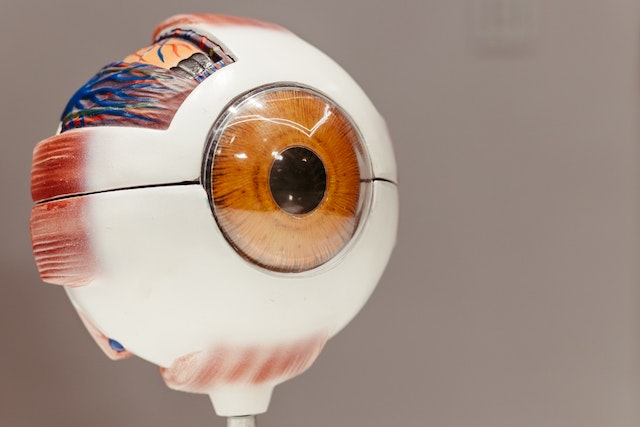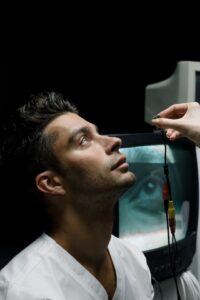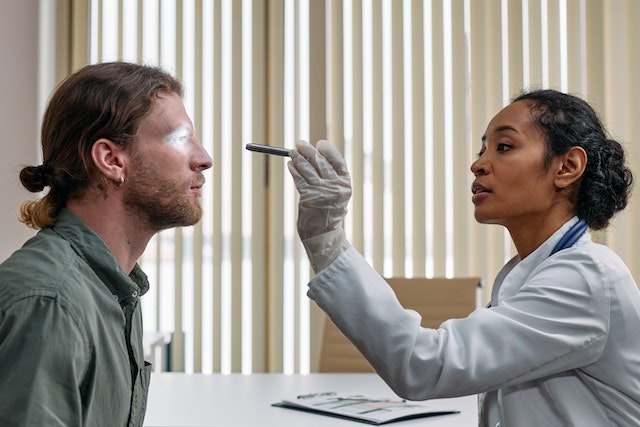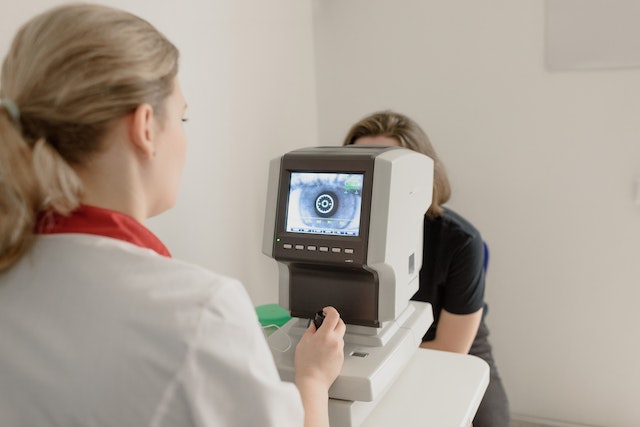Keratoconus, a relatively uncommon yet challenging eye disorder, that has long been a concern for both patients and medical professionals. The condition leads to the gradual thinning and conical bulging of the cornea, which is the transparent front surface of the eye. This transformation gives rise to distorted vision. While glasses and contact lenses have been the traditional solutions, keratoconus future treatments are brimming with exciting advancements. From innovative ring segments to enhanced cross-linking techniques and the potential of cellular therapies, the landscape of keratoconus treatment is evolving rapidly.
Keratoconus Future Treatments
Presently, keratoconus management includes corrective eyewear (glasses or contact lenses) or more invasive options like corneal cross-linking (CXL) and corneal implants. Although they offer effectiveness to a certain degree, these treatments come with limitations and might not be suitable for every patient. This is where the future of keratoconus treatments comes into play.
1. Ring Segments: An Innovative Perspective
The quality of life for patients with keratoconus can be significantly compromised due to the visual disturbances that accompany the condition. One promising avenue for addressing this challenge is the use of intracorneal ring segments, also known as corneal implants or intrastromal corneal rings. These tiny, transparent crescent-shaped devices are inserted into the cornea to help reshape its curvature, thereby improving vision. This is done with cornea surgery which is done at our clinic in Dubai.
By utilizing a minimally invasive method, this procedure strives to enhance visual acuity. The segments provide structural support to the cornea, effectively flattening the cone-like shape and reducing irregular astigmatism. As technology advances, these segments are becoming more customizable, allowing ophthalmologists to tailor the treatment to each patient’s specific needs. The ease of insertion and potential for reversible adjustments make ring segments a hopeful prospect in the future of keratoconus management.
2. Enhanced Cross-Linking Techniques: Strengthening the Foundation
Corneal collagen cross-linking (CXL) has emerged as a standard treatment for keratoconus. This procedure involves applying a photosensitizing agent to the cornea and exposing it to ultraviolet (UV) light. The interaction between the agent and UV light creates cross-links between collagen fibers, reinforcing the corneal structure and slowing down the progression of the disease. At the North American Lasik & Eye Centre we are experts at treating Keratoconus so please schedule an appointment through our contact us page and we will get you scheduled for a consultation.
In recent years, enhanced cross-linking techniques have surfaced, aiming to refine the procedure for better outcomes. One such advancement is accelerated CXL, which employs higher-intensity UV light for a shorter duration, reducing patient discomfort and treatment time. Another approach involves combining CXL with topography-guided techniques, which use corneal mapping to tailor the treatment to the unique irregularities of each patient’s cornea. These innovations in cross-linking hold the potential to offer more efficient, personalized, and effective treatments for keratoconus.
3. Cellular Therapies for Keratoconus Future Treatments
The most groundbreaking and futuristic prospect in keratoconus treatment lies in cellular therapies. These therapies involve using living cells to repair and regenerate damaged tissues in the cornea. While still in the experimental stages, they hold immense promise for addressing the root causes of keratoconus.
One approach involves utilizing stem cells derived from the patient’s own body, such as the limbus or the corneal epithelium. These cells can be cultured, expanded, and then transplanted onto the cornea to stimulate healing and regeneration. Another avenue of exploration is the use of amniotic membrane grafts, which contain natural growth factors that promote tissue repair and reduce inflammation.
While cellular therapies for keratoconus are in their infancy and require further research and refinement, they represent a revolutionary step toward addressing the underlying structural issues that contribute to the disease.
The future of keratoconus treatment is undeniably patient-centric, focusing on improving both the effectiveness and the patient experience. The innovations discussed—ring segments, enhanced cross-linking techniques, and cellular therapies—promise a brighter outlook for individuals living with keratoconus.
By offering minimally invasive solutions that reshape the cornea and strengthen its structural integrity, these advancements aim to reduce the need for constant reliance on corrective lenses. This not only improves visual acuity but also enhances patients’ self-confidence and quality of life.
Additionally, cellular therapies offer promise for severe keratoconus cases where traditional treatments may be insufficient. By addressing the condition’s core causes and facilitating tissue regeneration, these therapies hold the potential to halt or even reverse disease progression.
Conclusion
As we stand on the cusp of these exciting developments in keratoconus treatment, it’s important to remember that ongoing research, testing, and collaboration between medical professionals and researchers are key to realizing this promising future. While these innovations are on the horizon, they might not be universally available or fully refined just yet. However, the collective efforts of the medical community ensure that the trajectory of keratoconus management is moving toward more effective and patient-friendly solutions. With ring segments, enhanced cross-linking techniques, and the potential of cellular therapies, the future of keratoconus is indeed looking clearer for all those affected by this challenging condition.





